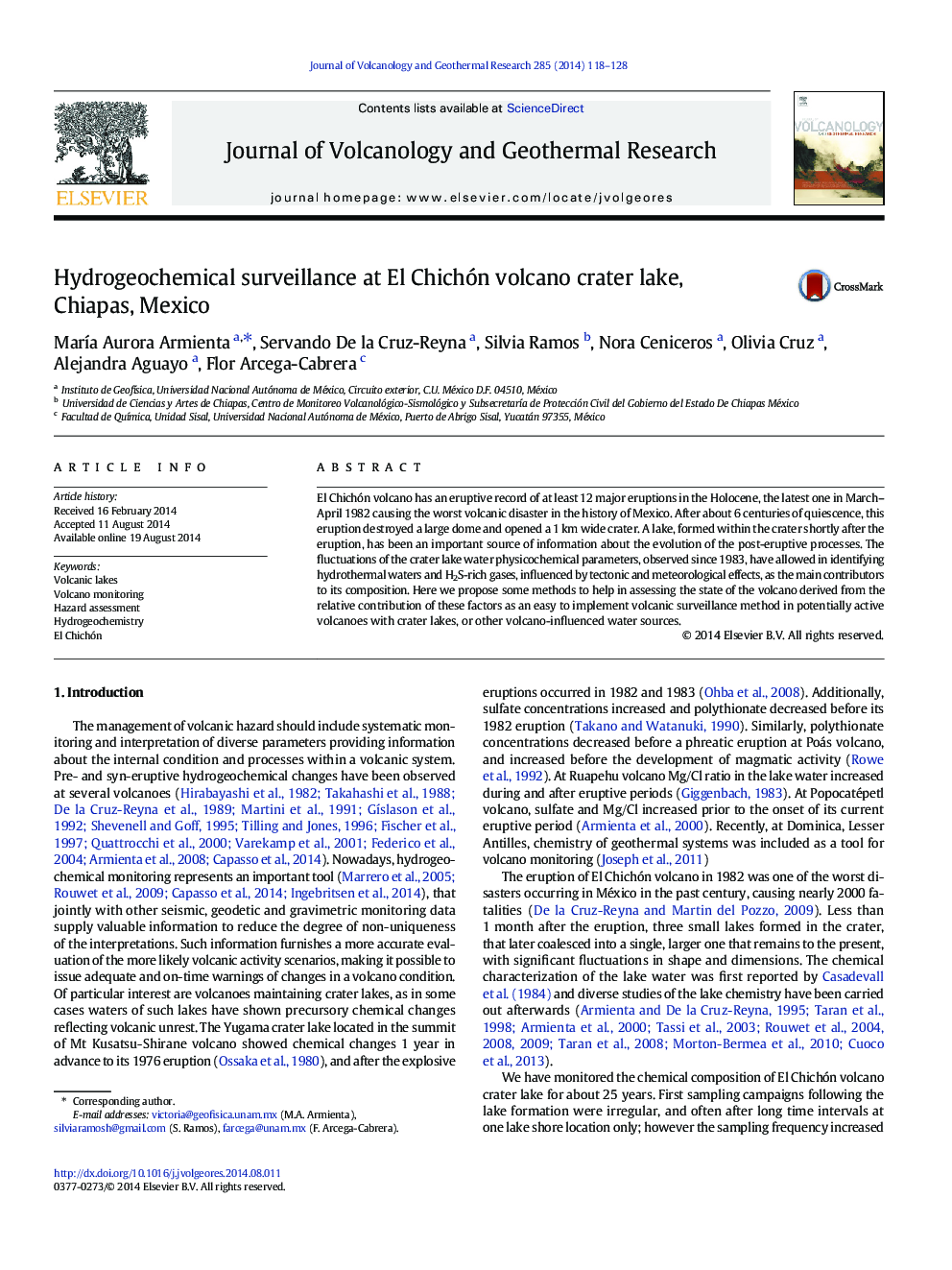| Article ID | Journal | Published Year | Pages | File Type |
|---|---|---|---|---|
| 4713057 | Journal of Volcanology and Geothermal Research | 2014 | 11 Pages |
•Hydrothermal, volcanic gas and rainfall interactions at El Chichón crater lake•Tectonic influence on the lake input of volcanic gas and hydrothermal water•Sulfate, pH, F, Cl and conductivity as main indicators of the lake geochemistry•Sulfate in water, a simple to monitor indicator of volcanic activity increase
El Chichón volcano has an eruptive record of at least 12 major eruptions in the Holocene, the latest one in March–April 1982 causing the worst volcanic disaster in the history of Mexico. After about 6 centuries of quiescence, this eruption destroyed a large dome and opened a 1 km wide crater. A lake, formed within the crater shortly after the eruption, has been an important source of information about the evolution of the post-eruptive processes. The fluctuations of the crater lake water physicochemical parameters, observed since 1983, have allowed in identifying hydrothermal waters and H2S-rich gases, influenced by tectonic and meteorological effects, as the main contributors to its composition. Here we propose some methods to help in assessing the state of the volcano derived from the relative contribution of these factors as an easy to implement volcanic surveillance method in potentially active volcanoes with crater lakes, or other volcano-influenced water sources.
